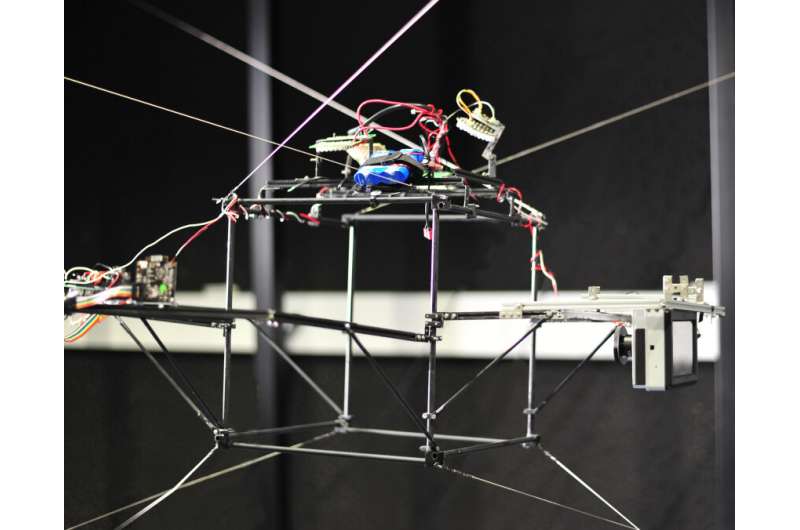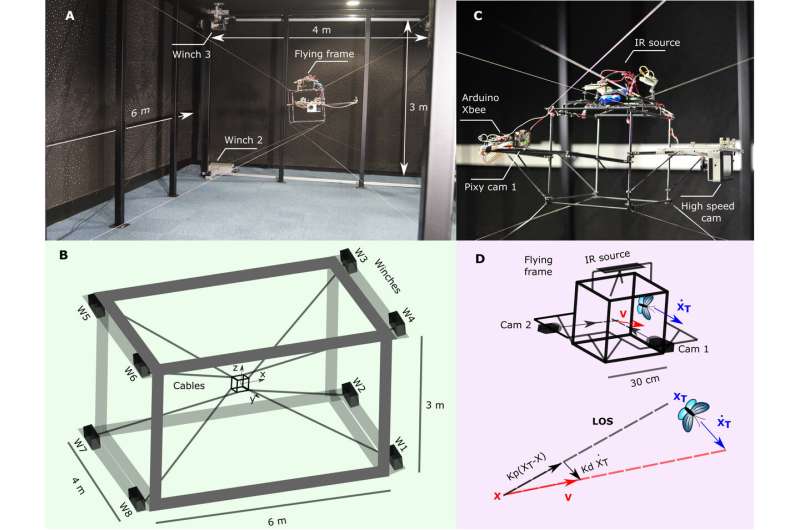The lab-on-cables. Credit: Pannequin et al., Sci Robot. 5, eabb2890 (2020)
Flying insects have developed effective strategies for navigating in natural environments. However, the experimental study of these strategies remains challenging due to the small size of insects and their high speed of motion: Today, it is only possible to study insects that are "tethered" or in stationary flight.
Scientists from the CNRS, Université de Lorraine, and Inrae have developed the first cable-driven robot that can follow and interact with free-flying insects.
With the help of this "lab-on-cables," which is equipped with cameras and a controller that minimizes tracking errors between the insect's and the robot's position, they successfully studied the free flight of moths (Agrotis ipsilon, approximately 2 cm long) up to a speed of 3 meters/second.
This research paves the way for tracking other insects such as fruit flies or mosquitos, and will help to better understand the orientation strategies used by these insects in response to olfactory or visual stimuli, among others.
The results will be published in Science Roboticson 10 June, and will also appear on the cover.
Video of the lab-on-cables. Credit: Pannequin et al., Sci Robot. 5, eabb2890 (2020)
Video from the camera mounted on the lab-on-cables recording a moth’s flight. Credit: Pannequin et al., Sci Robot. 5, eabb2890 (2020) Video of moth taking off from the platform inside the lab-on-cables. Credit: Pannequin et al., Sci Robot. 5, eabb2890 (2020) Set up of the lab-on-cables. Credit: Pannequin et al., Sci Robot. 5, eabb2890 (2020)
More information: R. Pannequin el al., "Automatic tracking of free-flying insects using a cable-driven robot," Science Robotics (2020). robotics.sciencemag.org/lookup … /scirobotics.abb2890
Journal information: Science Robotics
Provided by CNRS

























